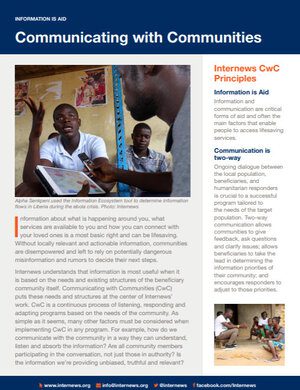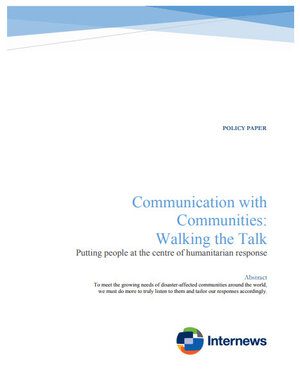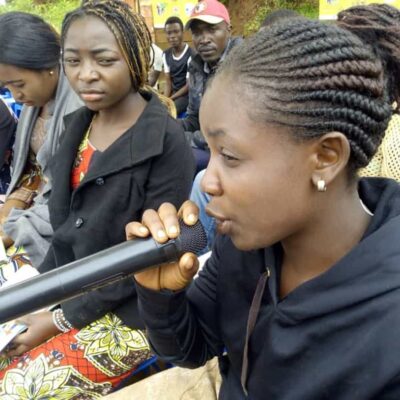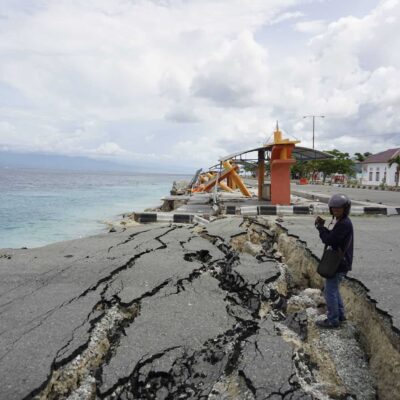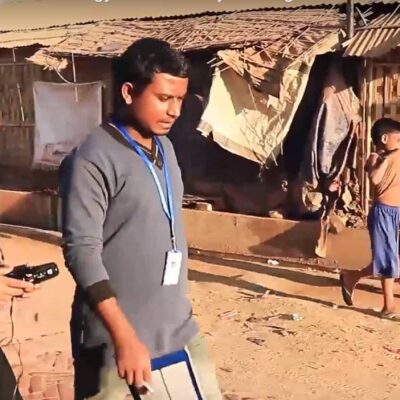Information about what is happening around you, what services are available to you and how you can connect with your loved ones is a basic right – and such information can be lifesaving. Without locally relevant and actionable information, communities are disempowered and left to rely on potentially dangerous misinformation and rumours to decide their next steps.
Internews understands that information is most useful when it is based on the needs and existing structures of the beneficiary community itself. Communicating with Communities (CwC) puts these needs and structures at the center of Internews’ work. CwC is a continuous process of listening, responding and adapting programs based on the needs of the community. As simple as it seems, many other factors must be considered when implementing CwC in any program. For example, how do we communicate with the community in a way they can understand, listen and absorb the information? Are all community members participating in the conversation, not just those in authority? Is the information we’re providing unbiased, truthful and relevant?
INTERNEWS’ CWC PRINCIPLES
1. Information is Aid
CwC is based on the principle that information and communication are critical forms of aid, without which people affected by a crisis cannot access services or make well-informed decisions for themselves and their communities. However access to information is only the first step, just as the absence of information can lead to inaction, inaccurate information can lead to counterproductive actions.
The main goal of CwC is to help the affected population access timely, accurate and actionable information and communicate effectively with the people assisting them. This also means CwC is a field of work quite distinct from conventional public information, messaging or advocacy.
2. Communication is two-way
Communication is a two-way process, and effective CwC strategies facilitate ongoing dialogue between the local population, beneficiaries and responders, both local and international. CwC projects establish strong communication channels to ensure information needs are being met, gaps in coverage are identified, and future project implementation is more well-informed.
A strategic, two-way CwC approach allows beneficiaries to interact with information received to give feedback, ask questions and clarify, creating a responsive information system, tailored to the actual needs of the population. Affected communities are seen as experts in their environment and not as a mere audience or occasional source of feedback. This model requires commitment from humanitarian agencies and responding organizations to let communities take the lead in determining the information priorities of their community.
An essential part of this two-way communication model is response. It is not enough to ask local communities the right questions; a dialogue must exist in a way that directly affects program implementation. Communities must see progress as a result of CwC. For this purpose, the use of monthly assessments, complaints boxes, community working groups, etc. is common among most emergency response actors. While these tools play a critical role, their use should be constrained by each organisation’s capacity to process the new information and to appropriately utilize it to modify and improve project activities to respond to community input. In short, two-way communication is not the sum of information provision and information collection, but it is an embedded process, where information flows continuously and the provision of information is intrinsically connected to the collection of feedback, leading to a continuous dialogue.
3. Start with the information eco-system
To design effective CwC projects it is important to understand what communication channels are used, trusted and available to the affected population, including newsletters, mass media, SMS and face-to-face conversations. Internews will always prefer to work with what is already used and available, rather than duplicating existing structures or inventing new ones.
The use of different methods of communication is also based on the assumption that information is digested and understood differently by different people, and any investigation into a local information ecosystem needs to consider digital, age, education, linguistic and gender divides. Engaging local communities doesn’t necessarily require high levels of technical capacity; in most cases the technology already exists to deliver what is needed.
However, an overall increase in the supply of information channeled to local and national information ecosystems will not necessarily result in all citizens becoming “better informed”, especially in a dynamic conflict environment where previously trusted media may be used for political advantage. This is why Internews looks at information ecosystems as an integrated ever-changing system, where continuous adaptation and iterations are needed to provide reliable information via trusted channels.
4. Information must be useful
Internews focuses on practical information that is relevant for the affected population who is in the middle of the crisis. The information should be:
- Timely: the distribution of information should be fast enough to be relevant to the population, which is typically very difficult in a humanitarian crisis where the situation may be fluid.
- Actionable: people should be able to act upon the information that is shared. This also means feedback loops should be kept short, local, and qualitative, preserving the locally relevant detail, rather than quantitative, turning feedback into statistics and trends.
- Trustworthy: it’s not so much whether people understand what you’re saying; what matters most is that they’re comfortable talking to you, providing feedback and engaging with the communication process.
READ MORE
